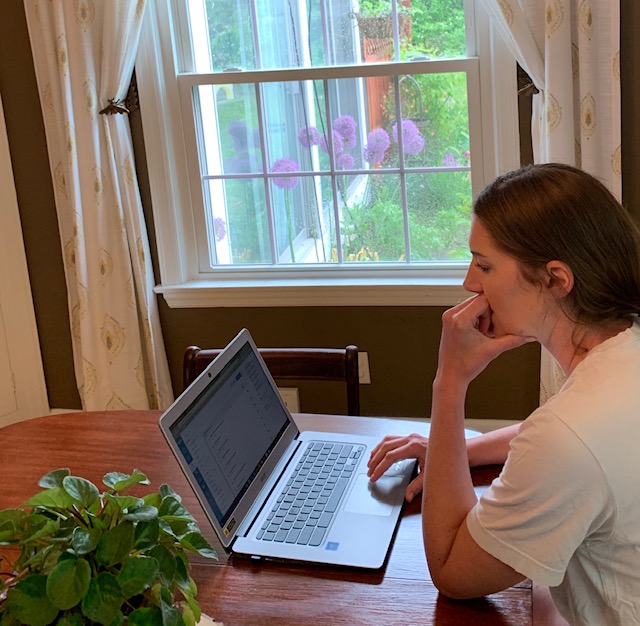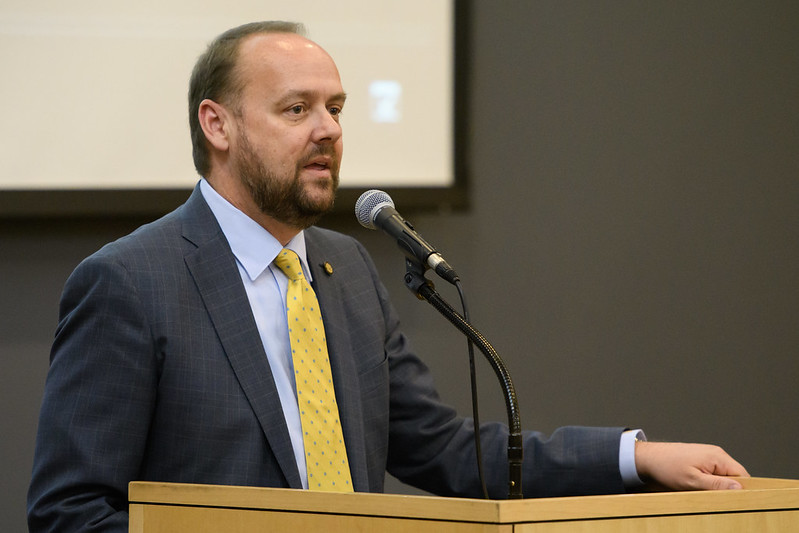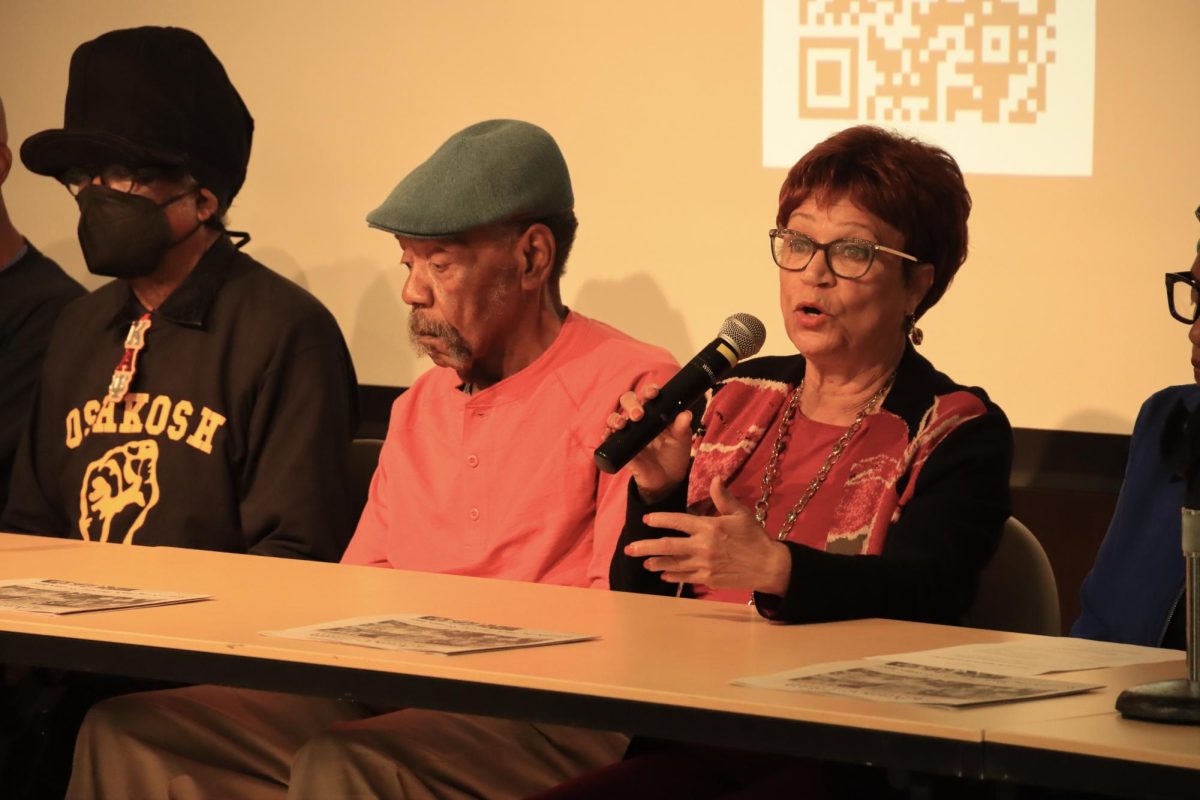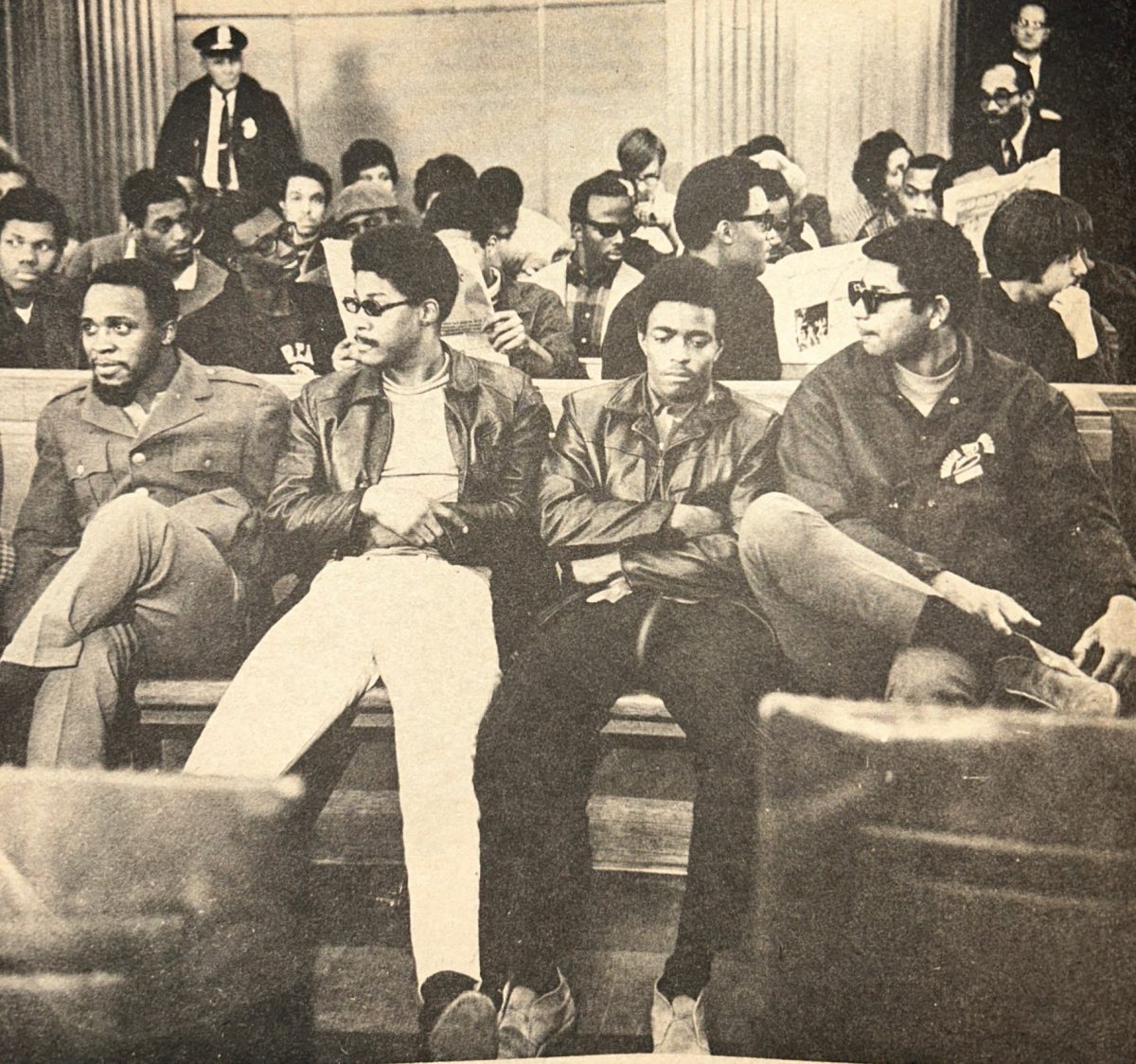Online teaching is a learning experience for Wisconsin high school teachers
Oshkosh West High School art teacher Elisabeth Brydon says it is a challenge to reach students who are struggling with the virtual format.
May 28, 2020
As the threat of COVID-19 still lingers throughout the country, high school teachers throughout the state of Wisconsin have been forced to adjust to online instruction to finish out the school year successfully.
“I’d say the biggest challenge has been the lack of connecting with students,” said Sara Klein, Oshkosh North High School English teacher. “It’s really hard to make genuine connections over the computer. Face-to-face is so much better.”
On March 13, Wisconsin Gov. Tony Evers ordered that all Wisconsin schools, public and private, would have to close due to COVID-19 concerns by March 18.
Wisconsin high school teachers had varying levels of concern with the lack of time they had to convert their lesson plans to be effective as online instruction.
“We all kind of knew it was coming so we had a little bit of time to mentally prepare,” Fond du Lac High School band teacher Christopher Barnes said. “We were given Tuesday as an in school work day with meetings and everything to set expectations. Wednesday, Thursday and Friday of that week were meant for preparing for online schooling to start the following Monday.”
Klein said that the teachers at Oshkosh North had a limited amount of time to gather the supplies they needed from their classroom before the school was closed off.
“We basically had two days in our classrooms to prepare and grab what we needed before we wouldn’t be allowed in the school anymore.” Klein said.
Although the original school closure order was only supposed to last until April 5, any chance of a return to in person instruction for the spring semester was dashed on March 17 when Gov. Evers extended school closures to be indefinite.
“We could see the writings on the wall and knew it was coming, but it escalated pretty quickly,” said Elisabeth Brydon, Oshkosh West High School art teacher.
Although high school teachers throughout the state quickly altered their lesson plans for online instruction, they have been able to develop routines in order to regain a level of normalcy.
John Moe, a math teacher at Appleton West High School, uploads assignments at different rates depending on the complexity of the class.
“A simpler class like algebra is one day at a time,” Moe said. “That class
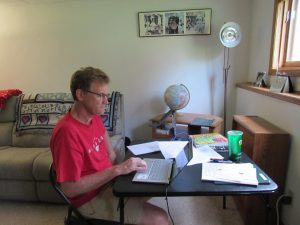
is setup on Canvas, and each day they can see what their assignment is. My other classes like pre-calc, calc AB and AP stats, those are more upper level. I give them homework a week at a time. I have been making video lessons, and I kind of spread those out a day here a day there.”
Todd Koeller, a math teacher at New London High School, has set up a reoccurring digital lecture in order to compensate for the lack of face-to-face instruction.
“In between grading student work and digital meetings I also have to create daily digital lessons for students,” Koeller said. “The lecture or lesson that would have occurred if we were meeting face-to-face.”
In order to make sure students don’t fall behind, Koeller gives students the option to set up one-on-one virtual meetings to go over lessons more in depth.
“Some students who need more help than just an email will then schedule a Google Meet with me to aid in their understanding,” Koeller said. “I also have regularly scheduled digital meetings with other staff as we work out best practices to help students be successful.”
While some subjects are more easily converted into online instruction, other teachers have struggled making their course material fit into online instruction.
“I teach black and white darkroom film photography so online learning has definitely forced me to think creatively about how I teach.” Brydon said. “I would say, as with regular teaching, every day is different.”
Due to school buildings being closed due to COVID-19, Brydon has had to get innovative with her online instruction.
“I can’t teach students how to create photos in the darkroom and have them take their pictures with their 35mm cameras,” Brydon said. “Instead we have to make due with taking pictures with our phones and doing projects with supplies from at home. It has been harder to think more creatively with my lessons, but a good challenge.”
The transition to online instruction has been especially challenging for teachers who teach courses in performance arts.
Barnes said despite having to completely alter how he teaches band; he has found some benefits with the change.
“It is nearly impossible to do anything as a group virtually,” Barnes said. “We have had to shift what we teach and what we assess. Some students are benefitting from less structure. They get more time to focus on the stuff they want to focus on and get more sleep.”

Klein said the transition to online instruction has also created some unforeseen benefits for her students.
“It’s taken out the ‘filler’ work that’s sometimes used in class and broke it down to the essentials only,” Klein said. “which makes learning a little easier for some students.”
The benefits that come with online instruction has inspired Koeller to incorporate what he has learned in his future instruction.
“Through all this I have learned a great deal about the technology of digital learning,” Koeller said. “Next year, as we move back to traditional learning, I plan to continue to use a document camera and Google Classroom to supplement my regular lessons. I believe this will be a great tool for students who are absent.”
While Wisconsin high school teachers have found some benefits teaching from a digital classroom, many have dealt with a new set of challenges since leaving the physical classroom.
Moving classes online has allowed students to complete school work on their own schedule, which has created some obstacles for their teachers.
“I offer a Zoom meeting every school day between 9:30 a.m. and noon for any students who want face-to-face help,” Klein said. “But a lot of my students don’t work on schoolwork until late at night. So, we’re doing the email thing to try to connect. They’ll have questions at midnight, and then be a little annoyed when I don’t answer until the next morning.”
In addition to issues with asynchronous schedules, some teachers have had trouble making contact with their students at all.
“I have a couple kids in precalc that haven’t even signed up for Google Classroom,” Moe said. “By now every house should have Wi-Fi because the district delivered hundreds of these hot-spot things to homes, so that every home had Wi-Fi. But you also don’t know if some kids might have to babysit siblings. Some kids are working because they are the only ones with a job in the home. That has been the hardest thing, the not knowing what’s going on out there, especially with kids that aren’t turning in their work.”
Students dropping off since the transition to online instruction has not been an isolated issue.
“The biggest challenge has been reaching the students that aren’t doing the work,” Brydon said. “I probably have a bit more students who aren’t turning assignments in than I would in the traditional classroom setting. The district has done their best to provide students with as equitable of an online experience as possible. But it still is a challenge to reach the students that are struggling. We are definitely missing the day-to-day human connection that our students really rely on.”
Students who have failed to keep up with online courses have been an issue for teachers, as they struggle to give those who have not responded to online instruction effective help.
“My biggest struggle has been those students who have done very little work since March 16,” Koeller said. “As a teacher, we want all students to be successful, so it has been quite frustrating when we have little or no contact with students who struggle.”
Throughout the coronavirus pandemic, teachers have had a hard time finding a work-life-balance while teaching online.
“It is mentally and emotionally draining,” Barnes said. “I am working from home with a 1½-year-old son who needs constant care and attention so I have to work efficiently and kind of choose my battles. You would be hard pressed to find a teacher that says their favorite part of teaching is grading assignments and that’s pretty much what I spend 75% of my time doing.”
Since moving to online classes, Koeller said he has had to spend much more time grading and correcting assignments.
“My wife and I are both teachers and we both spend many more hours each day dealing with school work,” Koeller said. “Just something simple like circling a mistake on an assignment and writing a quick note of correction and handing it back in person, has now become an email that needs to be written with the specifics of the mistake. It just takes longer to help students.”
Although teachers have had to overcome many challenges while teaching online, they are not alone in struggling with the transition.
“Some of our students have felt overwhelmed with the transition, which isn’t especially surprising,” Brydon said. “This is a huge, huge change for them and although they have been given lots of resources, it is still very difficult for some of them. Schools are more than just places for students to learn and grow academically; they also provide a place for students to grow socially and emotionally.”

